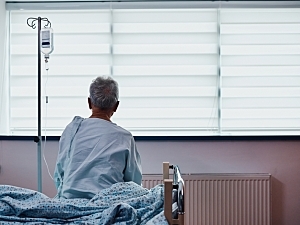Delirium in hospitalized patients with Alzheimer’s disease or a related disorder (ADRD) is associated with poor outcomes, including prolonged length of stay and increased risk of functional decline and mortality.
Tammy T. Hshieh, MD, MPH, associate physician in the Division of Aging at Brigham and Women’s Hospital, and colleagues through the Aging Brain Center in the Hinda and Arthur Marcus Institute for Aging Research at Hebrew SeniorLife, recently explored from a healthcare system perspective the direct costs of delirium in hospitalized patients with and without ADRD.
They expected delirium in ADRD patients would increase costs overall. However, in Alzheimer’s & Dementia, they say the findings were more nuanced. Some costs for patients with ADRD decreased, especially those with severe delirium, whereas long-term home-based costs assumed greater importance.
Methods
The researchers analyzed data from The Better Assessment of Illness (BASIL), a prospective cohort study of 352 adults ages 70 and older who were hospitalized for a variety of general medicine issues between October 20, 2015, and March 15, 2017.
Using a previously described clinical consensus process published in the Journal of the American Geriatrics Society—not diagnosis codes or claims data—the BASIL investigators determined whether the patients have ADRD or no ADRD (either free of dementia or status unclear).
The analysis sample had 311 patients. 76 (24%) were determined to have ADRD.
Delirium was assessed daily in BASIL and determined using the Confusion Assessment Method (CAM) supplemented by chart review. The highest value of CAM-Severity during hospitalization was used for the current analysis, categorized as none or mild (0–2 points), moderate (3–8 points), or severe (9–14 points).
Key Results
The principal observations about healthcare costs were:
- Delirium was associated with significantly increased overall healthcare costs at 30 and 90 days after discharge (P=0.04 and P=0.03, respectively)
- Non-ADRD patients who developed severe delirium had significantly increased healthcare costs at all time points studied (30, 90, and 365 days)
- Cumulative healthcare costs per ADRD patient, up to day 365 after discharge, were significantly higher for those who developed delirium than for those who did not (adjusted mean difference, $34,828; P=0.05)
- After adjusting for the high mortality rate of the ADRD group (38% at 1 year), ADRD patients who developed delirium did not have significantly increased healthcare costs than the non-ADRD group at any time point studied
- ADRD patients with severe delirium had significantly decreased healthcare costs for the hospitalization ($46,137 for none–mild delirium vs. $18,686 for severe delirium; P=0.03), and results were similar at 30 and 90 days
- Delirium in ADRD patients was associated with increased costs of long-term home-based healthcare (nursing, physical therapy, home health care, medical equipment, hospice): the mean difference between ADRD and non-ADRD patients was $2,119 (P=0.02) at 90 days and $4,027 (P=0.08) at 365 days
Commentary
The relatively lower healthcare expenditures in ADRD patients with more severe delirium might be aligned with patient goals for less aggressive care. That result could also be attributable to costs that are difficult to capture by Medicare (e.g., family caregiving, longer-term admissions to psychiatric facilities, and antipsychotic medications).
Multicomponent delirium prevention strategies, such as the Hospital Elder Life Program, might prevent at least some of these costs and improve the health of older adults with ADRD.
